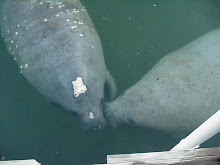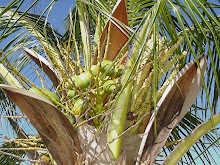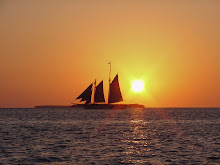In a past post I blogged about the many catalogs I get in the mail. I usually look through them, rarely order anything and then recycle them.
In September of last year I got a National Geographic catalog in the mail and I saw something that sounded interesting so I bought it (and two days later, talked The Colonel into getting one too).
We bought two National Geographic Geno 2.0-Genographic Project Participation and DNA Ancestry Kits.
More than half a million people have participated in the project. The project tests nearly 150,000 DNA markers that have been specifically selected to provide unprecedented ancestry-related information. The project is an ambitious attempt to help answer fundamental questions about where humankind originated and how we came to populate the earth.
As participants, The Colonel and I contributed our data (DNA) to the Genographic Project's database and are helping their scientists and researchers to chart a comprehensive map of the early stages of human history.
Through our participation we would discover the migration paths of our ancient ancestors. We would also learn what percentage of our genome is affiliated with specific regions of the world and if we have Neanderthal (Western Eurasian Caveman) or Denisovan (Eastern Eurasian Caveman; first bone found in a cave in Siberia and the bone was that of a young female) ancestry.
We were excited when the kits finally arrived in the mail.
Now we were ready to package our DNA samples and send them in the mail.
The Colonel and I were alerted, via an email, as to where in the project's process our DNA samples were. My DNA sample was isolated on November 7th and finally completed on December 3rd. The Colonel's sample took roughly a week to ten days longer to be completed. Males have a Y chromosome so the patriarchal line needs to be traced as well as their matriarchal X chromosome. Females have two X chromosomes so only the matriarchal line can be traced.
My DNA results showed that I am 42% Northern European, 39% Mediterranean and 16% Southwest Asian. This means that my first reference population is British (United Kingdom) and my second reference population is German. My hominid ancestry is 1.4% Neanderthal and 1.7% Denisovan.
Remember, The Colonel got his results later than I did and when he found out that I had Neanderthal DNA he laughed and called me a "knuckle-dragger". When his results came in they showed he had more Neanderthal DNA than I did at 3.0% (more than twice mine. Who is the "knuckle-dragger" now hmmm?). His Denisovan ancestry is 3.2% (again, more than mine). Most non-Africans are about 2% Neanderthal.
By looking at the genetic markers I carry, the Geno 2.0 Project traced my lineage, ancestor by ancestor (female ancestors only via the Mitochondrial DNA I carry) and revealed a path they traveled as they moved out of Africa. My earliest ancestors lived in East Africa about 70,000 years ago and were the first modern humans to leave Africa and move northward.
As my ancestors moved north they lived in the eastern Mediterranean region and western Asia for a while, and this is where they coexisted for a time with the Neanderthals (and when the Neanderthal DNA was introduced into my lineage).
My maternal ancestors would eventually migrate to southeastern Europe and then expand north into Europe. They survived by hunting and finding wild food sources. In Europe, they met with those who were already there and formed new cultures that are reflected in the archaeological record. Thus, my cousins played an important role in the history of Europe.
The Colonel and I are interested in our genealogy and learning where we fit on the "Genetic Family Tree of Humankind" is right up our alleys. Knowing our genetic ancestry is a gift we passed down to our children. Now they know that they have British (United Kingdom) and German ancestry on both sides of the family.
I am glad I decided to purchase something from one of the myriad of catalogs that pass through my mailbox. It has been interesting and exciting to learn about The Colonel's and my genetic ancestors and help the National Geographic's Geno Project.
Note: The Geno Project is an on-going process. The DNA I supplied to them is being constantly reviewed as they have more information to compare it to and as more people join the project. In August 2013 I was informed that my reference populations changed. My first reference population is now German and my second reference population is Greek. I have a younger brother joining the project soon. I am curious to see what my paternal side of the family will show through his DNA.
Note: My youngest brother's DNA showed that our paternal side of the family is Danish. So, as of July 12, 2014, our DNA makeup is: Danish, German and Greek.








































